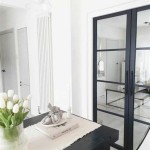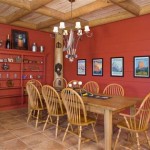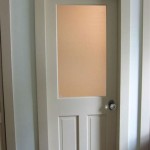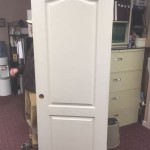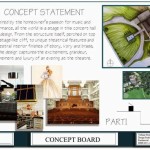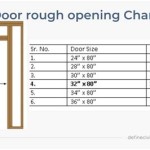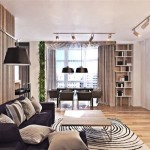What is Mid-Century Modern Interior Design?
Mid-Century Modern (MCM) interior design is a pervasive and influential style that emerged in the mid-20th century, specifically from the 1940s to the 1960s. It represents a significant shift away from the ornate and heavily embellished designs of previous eras, embracing simplicity, functionality, and a connection with nature. This style is not merely a historical relic; it continues to resonate with contemporary designers and homeowners, adapting and evolving while retaining its core principles.
The origins of Mid-Century Modern are deeply intertwined with the social, economic, and technological changes following World War II. The post-war era saw a surge in suburban development, driven by returning veterans and a booming economy. This expansion created a demand for affordable and functional housing and furnishings. At the same time, advances in manufacturing techniques and materials allowed for the mass production of innovative designs. The style was particularly influenced by the Bauhaus movement and Scandinavian design, which emphasized clean lines, functionality, and the integration of art and craft.
Mid-Century Modern encompasses a wide range of design elements, including furniture, architecture, and interior decoration. Its enduring appeal lies in its ability to create comfortable, stylish, and livable spaces that are both aesthetically pleasing and highly functional. Understanding the key characteristics of this style is crucial for anyone seeking to incorporate it into their home or appreciate its historical significance.
Key Point 1: Emphasis on Functionality and Simplicity
One of the defining characteristics of Mid-Century Modern design is its unwavering commitment to functionality. Every element within a space is carefully considered for its purpose and contribution to the overall usability of the environment. Ornamentation is kept to a minimum, and instead, the focus is on clean lines, simple forms, and efficient use of space. This emphasis on practicality stems from the post-war desire for affordable and accessible design solutions.
Furniture in the Mid-Century Modern style is often characterized by its streamlined silhouettes and minimalist aesthetic. Sofas and chairs typically feature low profiles, tapered legs, and simple upholstery. Storage solutions such as sideboards and dressers are designed with clean lines and minimal hardware, prioritizing practicality over embellishment. The absence of intricate detailing allows the beauty of the materials, such as wood grain and the texture of fabric, to take center stage.
The concept of open floor plans is also strongly associated with Mid-Century Modern design. This architectural feature promotes a sense of spaciousness and connectivity, allowing for flexible use of the interior space. By minimizing walls and partitions, light and air can flow freely throughout the home, creating a bright and welcoming atmosphere. This design principle reflects the modern lifestyle of the mid-20th century, which valued informality and social interaction.
Furthermore, the layouts within the rooms are focused on ease of use. Furniture is arranged to facilitate conversation and movement, and clutter is minimized to create a sense of order and calm. Every element contributes to the overall functionality of the space, creating an environment that is both aesthetically pleasing and highly practical.
Key Point 2: Use of Natural Materials and Organic Forms
Mid-Century Modern design celebrates the inherent beauty of natural materials and organic forms. This reflects a desire to connect with the natural world and bring elements of the outdoors into the interior space. Wood, in particular, plays a prominent role in MCM design, appearing in furniture, flooring, and architectural details. Teak, walnut, and oak are commonly used for their warm tones and distinctive grain patterns.
The incorporation of natural materials extends beyond wood to include stone, glass, and metal. Stone fireplaces, exposed brick walls, and large windows are common features in Mid-Century Modern homes, creating a sense of groundedness and connection to the surrounding landscape. Glass is used extensively to maximize natural light and create a visual connection between the interior and exterior spaces. Metal accents, such as chrome or brass hardware, add a touch of elegance and sophistication.
Organic forms, inspired by nature, are another defining characteristic of Mid-Century Modern design. Furniture often features curved lines and flowing shapes, softening the overall aesthetic and creating a sense of visual harmony. Eames chairs, with their molded plywood construction and organic curves, are iconic examples of this design principle. These forms are not only aesthetically pleasing but also contribute to the comfort and ergonomics of the furniture.
The color palettes used in Mid-Century Modern interiors often reflect the natural world, with earthy tones such as browns, greens, and oranges dominating the scheme. These colors create a warm and inviting atmosphere, complementing the natural materials used throughout the space. Bold pops of color, such as turquoise, yellow, or red, are often incorporated as accents to add visual interest and personality.
Key Point 3: Integration of Art and Technology
Mid-Century Modern design embraces both art and technology, reflecting the optimistic and forward-thinking spirit of the era. Art is considered an integral part of the interior landscape, adding visual interest, personality, and cultural significance to the space. Abstract paintings, geometric patterns, and sculptural objects are commonly displayed in MCM homes, contributing to the overall aesthetic and reflecting the artistic sensibilities of the occupants.
The integration of technology is another key aspect of Mid-Century Modern design. The innovations of the mid-20th century, such as televisions, stereos, and advanced lighting systems, were incorporated seamlessly into the interior environment. Furniture was often designed to accommodate these new technologies, with built-in storage solutions and integrated wiring systems. This reflects a desire to embrace the advancements of the modern world and create spaces that are both functional and technologically advanced.
Lighting plays a crucial role in Mid-Century Modern design, with a focus on both functionality and aesthetics. Floor lamps, table lamps, and pendant lights are used to create layered lighting schemes that enhance the ambiance and highlight architectural features. Iconic lighting designs, such as the Arco floor lamp or the Nelson Bubble lamps, are highly sought after for their sculptural forms and functional illumination.
The incorporation of innovative materials, such as molded plywood, fiberglass, and plastic, also reflects the technological advancements of the era. These materials allowed designers to create furniture with complex curves and lightweight structures, pushing the boundaries of design and functionality. The use of these materials also contributed to the affordability of Mid-Century Modern furniture, making it accessible to a wider audience.
Beyond furniture and accessories, technology also played a role in the systems within the house. Improved heating and cooling systems were designed to be efficient and unobtrusive, allowing inhabitants to enjoy the space to the fullest. Similarly, new kitchen appliances were integrated in a way that was both aesthetically pleasing and highly functional, allowing for a streamlined kitchen design.
In conclusion, Mid-Century Modern interior design is more than just a style; it is a reflection of a specific time and place, characterized by its emphasis on functionality, natural materials, and the integration of art and technology. Its enduring appeal lies in its ability to create comfortable, stylish, and livable spaces that are both aesthetically pleasing and highly functional. By understanding the key characteristics of this design movement, individuals can better appreciate its historical significance and incorporate its principles into their own homes.

Mid Century Modern Interior Design What Is It And Stunning Examples

What Is Mid Century Style In Interior Design Inspiration Books Blog

Mid Century Interior Design 7 Tips For Creating A Timeless Modern

Mid Century Interior Design 7 Tips For Creating A Timeless Modern

Mid Century Modern Interior Design 6 Features And Stunning Ideas

An Interior Design Expert Explains Why Mid Century Modern Will Never Go Out Of Style

History Of Interior Design Mid Century Modern

Mid Century Modern Design Defined How To Master It Décor Aid

Midcentury Modern Style 101

Discover Mid Century Modern Interior Design Tips Inspiration Nook Find
Related Posts

